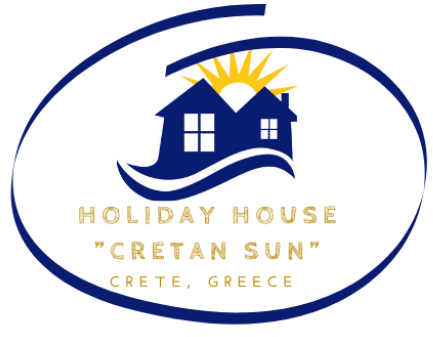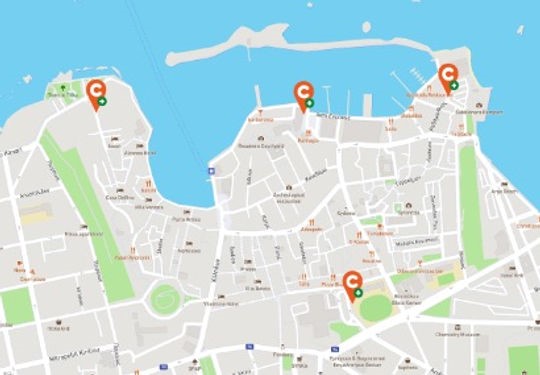The Turkish quarter
The rich history of the area dates back from the Venetian era when it was named Ponte Dei Viari referring to a bridge connecting the eastern gate of the Kasteli settlement with modern Daskalogianni St. and Splantzia Square. The bridge took the name of an affluent Venetian family who were benefactors of the city in difficult times. The area had a lot of underground waters that is why there are findings of underground Venetian water tanks that could supply the city for 6 whole months. Current St. Nickolas church was originally the temple of the adjacent Monastery occupied by the Order of the Dominican monks, and was built in 1320. After the invasion of the Turks in 1645, the church is converted into a Mosque, named Houghiar Tzamissi – Hünkâr Camisi, by adding a minaret on the south side of the temple.
Modern Chania
Somewhere around the late 19th century, near the end of the Ottoman era, the increasing city’s population was suffocating within the limits of the Venetian Walls. Therefore the city began stretching out to the West, the East and mostly to the South. In 1870, the Turkish Chief Commander of Crete, Reouf Pasha, envisioned a city master plan of a Grand Walk for purposes of leisure and outdoor activities, beyond the Venetian Walls. Part of his daily routine, to walk towards a sandy area with a shady fig tree, gave him the inspiration to construct a City Garden (bahce) for everybody to enjoy some public, open, green space where cultural events could take place according to the European standards of the time.
KOUM KAPI
Having made the slow transition “from rugs to reaches” during the last century, this neighborhood with its distinct character, offers the visitor an elevated sea view during the day and an array of options for going out at nighttime.
Venetian name, was a big gate on the eastern end of the old walls of Chania city, which led to a beautiful sandy beach. Today, the neighborhood is known for its charming cafes and restaurants that are favored by the locals, so if you want to blend with local life, this is the place to do so. Koum Kapi offers one of the most distinct coastal promenades of the city, as it is elevated a couple of meters above sea level, providing great views.
Nea Chora
Standing at the Venetian Harbor of Chania city, it is difficult to imagine that there is a nice beach at less than a 1 km away where you can easily get there on foot. Welcome to Nea Chora. The neighborhood has developed west from the Venetian Harbor, and the name means “New Town” in Greek, because it was one of the first suburbs of the modern Chania city, that developed outside the Byzantine walls. Prior to that time, the area was full of crop fields, irrigated by Kladisos river. Nowadays, Nea Chora features the best beach in Chania city, along with some of the most delicious fish taverns.READ MORESUGGESTED WALKS
Enjoy a short but very satisfying walk along the coast, which will take you from the Venetian Harbor to the best beach in Chania city, and introduce you to some of the loveliest fish taverns in the city.
Recently the Municipality of Chania has also introduced a cycling lane along the walk that will lead you to the closest beach in the city center. You start from the western end of the Venetian Harbor, at Firkas Fortress, and follow the coastal road to the west. Right after you pass the San Salvador bastion, that set the limits of the western part of the old city walls, you enter the neighborhood. You continue all along the coastal road, on a nice route with a view to a rocky beach. After some time, you will encounter the building of the Chania National Nautical-Athletic Center, with its multiple sports facilities. You continue along the coast and after a sharp turn to the left you see the fishing harbor of Nea Chora. From here onwards, it is easy to find the ideal fish tavern for you, since there are plenty to go around and choose from. The coastal road has been completely redesigned to be pedestrian-friendly, with only mild traffic allowed during specific hours. More fish taverns are found beyond the fishing harbor right up to the splendid Nea Chora beach, which is perfect for families and those that are looking for amenities nearby.
CHALEPA
The diplomatic, political and aristocratic hub of the late 19th & early 20th century exudes opulence and charm to this day.
Chalepa is located on the North-East outskirts of Chania city where the road from Akrotiri (Cape) comes to an end entering the city. It was and still is an affluent suburb of the city, and back in the 19th century it was considered a diplomatic hub. Opulent mansions with large lush, gardens housed the crème-de-la-crème of Chania’s society and most of the consulates where also located in this aristocratic quartier. Prime Ministers of Greece such as the Ethnarch Eleftherios Venizelos and Konstantinos Mitsotakis lived in Chalepa.
TABAKARIA
The coastal extension of Chalepa towards the North is known as the Tabakaria area.
The word means tanneries in the Turkish language and the area is a very special and exciting sample
of the architectural and historical wealth of Chania!
A whole neighborhood on the city’s north eastern coast is considered an architectural monument, featuring mostly the remains of the industrial boom that took place in the 19th century. During the Egyptian occupation era, between 1830 and 1850, artisan tanners came flooding in, occupying the area that presented the ideal conditions for their craft. The processing of leather flourished right up to the 1950s when 80 tanneries were in full operation.
EL. VENIZELOS TOMBS
At Froudia of Akrotiri, on a hill top, within a beautiful landscape, one will find the Memorial Tombs of Eleftherios and Sofoklis Venizelos, the 16th century A.D. Venetian chapel of Prophet Elias and the memorial statue of Spyros Kagiales, hero of the 1897 rebellion. The spot offers unforgettable panoramic views of the entire city of Chania, facing the magical sunsets that shower the Cretan sea with endless colors.
The hill top Froudia at Akrotiri, on the east side of the city, was of major strategic and historic importance throughout the centuries. The two nave temple of Prophet Elias was also dedicated to Prophet Elysseo in the 16th century. It was built according to Venetian standards of ecclesiastic architecture. There are testimonies that there used to be a convent. In 1897, following the bombardment of the hill during the Greek rebellion against the Turks, the chapel was destroyed, yet the Tsar of Russia, Nicolas, funded its entire restoration. Prior to 1972 the chapel was surrounded by the Village of Profitis Elias, however in 1973 the area was expropriated by the State for the creation of the memorial area of the Venizelos Tombs, paying tribute to the Great Ethnarch of Greece and his son Sofoklis who was also the Prime Minister of Greece from 1943 to 1952.






